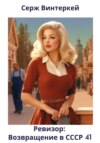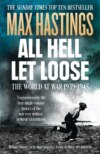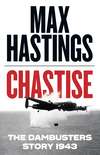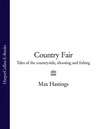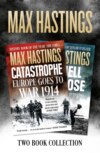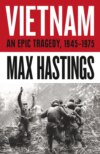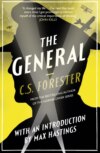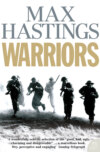Читать книгу: «Nemesis: The Battle for Japan, 1944–45»
Nemesis
MAX HASTINGS
THE BATTLE FOR JAPAN, 1944-45

 Copyright
Copyright
William Collins
An imprint of HarperCollinsPublishers Ltd. 1 London Bridge Street London SE1 9GF
This ebook edition first published in 2009
First published in Great Britain by HarperPress in 2007
Copyright © Max Hastings 2007
Cover photograph © akg-images/Pictures from History
Max Hastings asserts the moral right to be identified as the author of this work
A catalogue record for this book is available from the British Library
All rights reserved under International and Pan-American Copyright Conventions. By payment of the required fees, you have been granted the non-exclusive, non-transferable right to access and read the text of this e-book on-screen. No part of this text may be reproduced, transmitted, down-loaded, decompiled, reverse engineered, or stored in or introduced into any information storage and retrieval system, in any form or by any means, whether electronic or mechanical, now known or hereinafter invented, without the express written permission of HarperCollins ebooks
HarperCollinsPublishers has made every reasonable effort to ensure that any picture content and written content in this ebook has been included or removed in accordance with the contractual and technological constraints in operatin at the time of publication
Source ISBN: 9780007219810
Ebook Edition © SEPTEMBER 2009 ISBN: 9780007344093
Version: 2017-03-23
Praise
From the reviews of Nemesis:
‘The shocking, little-known story of the war against Japan. Absolutely excellent’
JOHN SIMPSON, Observer
‘Spectacular. Hastings is excellent, unsparing and compelling. Searingly powerful’
ANDREW ROBERTS, Sunday Telegraph
‘A triumph. Put all these elements together—the ambition, insight, sureness of touch—and you have a book of real quality’
LAURENCE REES, Sunday Times
‘An outstandingly gripping and authoritative account of the battle for Japan, and a monument to human bravery—and savagery’
DOMINIC SANDBROOK, Daily Telegraph
In memory of my son
CHARLES HASTINGS 1973-2000
Epigraph
War is human, it is as something that is lived like a love or a hatred…It might better be described as a pathological condition because it admits of accidents which not even a skilled physician could have foreseen.
MARCEL PROUST
‘Oh, surely they’ll stop now. They’ll be horrified at what they’ve done!’ he thought, aimlessly following on behind crowds of stretchers moving away from the battlefield.
Tolstoy’s Pierre Bezukhov at Borodino, 1812
In 1944, there seemed absolutely no reason to suppose that the war might end in 1945.
CAPTAIN LUO DINGWEN, Chinese Nationalist army
Contents
Cover Page
Title Page
Copyright
Praise
Dedication
Epigraph
Introduction
1 Dilemmas and Decisions
2 Japan: Defying Gravity
3 The British in Burma
4 Titans at Sea
5 America’s Return to the Philippines
6 ‘Flowers of Death’: Leyte Gulf
7 Ashore: Battle for the Mountains
8 China: Dragon by the Tail
9 MacArthur on Luzon
10 Bloody Miniature: Iwo Jima
11 Blockade: War Underwater
12 Burning a Nation: LeMay
13 The Road Past Mandalay
14 Australians: ‘Bludging’ and ‘Mopping Up’
15 Captivity and Slavery
16 Okinawa
17 Mao’s War
18 Eclipse of Empires
19 The Bombs
20 Manchuria: The Bear’s Claws
21 The Last Act
22 Legacies
A Brief Chronology of the Japanese War
Keep Reading
Acknowledgements
Notes and Sources
Index
About the Author
Other Books By
About the Publisher
Introduction
Sir Arthur Tedder, Eisenhower’s deputy supreme commander in Europe in 1944-45, suggested that warriors educating themselves for future conflicts should study the early phases of past ones: ‘There are no big battalions or blank cheques then,’ he wrote ruefully. In the first campaigns, nations which are victims rather than initiators of aggression enjoy scanty choices. They strive for survival with inadequate resources, often unsuitable commanders, all the handicaps of fighting on an enemy’s terms. Later, if they are granted time fully to mobilise, they may achieve the luxury of options, of might equal or superior to that of the enemy, of the certainty of final victory tempered only by debate about how to secure this most swiftly and cheaply. Tedder and his Allied comrades experienced all these sensations.
For students of history, however, the manner in which the Second World War ended is even more fascinating than that in which it began. Giants of their respective nations, or rather mortal men cast into giants’ roles, resolved the greatest issues of the twentieth century on battlefields in three dimensions, and in the war rooms of their capitals. Some of the most populous societies on earth teemed in flux. Technology displayed a terrifying maturity. Churchill entitled the closing volume of his war memoirs Triumph and Tragedy. For millions, 1944-45 brought liberation, the banishment of privation, fear and oppression; but air attack during those years killed more people than in the rest of the conflict put together. Posterity knows that the war ended in August 1945. However, it would have provided scant comfort to the men who risked their lives in the Pacific island battles, as well as in the other bloody campaigns of that spring and summer, to be assured that the tumult would soon be stilled. Soldiers may accept a need to be the first to die in a war, but there is often an unseemly scramble to avoid becoming the last.
I have written Nemesis as a counterpart to my earlier book Armageddon, which describes the 1944-45 struggle for Germany. It is hard to exaggerate the differences between the endgames of the Asian and European wars. In the west, American strategy was dominated by a determination to confront the German army in Europe at the first possible moment—which proved much later than the US joint chiefs of staff desired. It was taken for granted that Allied armies must defeat the main forces of the enemy. Uncertainty focused upon how this should be achieved, and where Soviet and Anglo-American armies might meet. The possibility of offering terms to the Nazis was never entertained.
In the Far East, by contrast, there was much less appetite for a ground showdown. Some in the Allied camp argued that the commitment to impose unconditional surrender upon the Japanese should be moderated, if this would avert the necessity for a bloodbath in the home islands. Only in the Philippines and Burma did US and British ground forces encounter, and finally destroy, major Japanese armies—though none was as large as the enemy host deployed in China. The US Navy and Army Air Forces sought to demonstrate that blockade and bombardment could render unnecessary a bloody land campaign in the Japanese home islands. Their hopes were fulfilled in the most momentous and terrible fashion.
The phrase ‘heavy casualties’ recurs in studies of the eastern conflict. It is often used to categorise American losses on Guadalcanal, Iwo Jima, Okinawa and in smaller island battles. It deserves more sceptical scrutiny than it usually receives, however, being justified only in relation to the relatively small forces engaged, and to the expectation of the American people that a nation as rich and technologically powerful as their own should be able to gain victory without great loss of blood. The lives of some 103,000 Americans were sacrificed to defeat Japan, along with 30,000 British, Indian, Australian and other Commonwealth servicemen, in addition to those who perished in captivity. The US pro rata casualty rate in the Pacific was three and a half times that in Europe. America’s total loss, however, represented only a small fraction of the toll which war extracted from the Soviets, Germans and Japanese, and only 1 per cent of the total deaths in Japan’s Asian war. Americans came to expect in the Pacific a favourable exchange rate of one US casualty for every six or seven Japanese. They were dismayed when, on Iwo Jima and Okinawa, the enemy fared better, losing only in the ratio of 1.25:1 and 1.3:1 respectively, though almost all the Japanese losses were fatal, compared with less than one-third of the American. Pervading US strategy was a cultural conceit about the necessary cost of victory. This proved justified, but should not have been taken for granted in a conflict between major industrial nations.
I agree wholeheartedly with American scholars Richard Frank and Robert Newman, that underpinning most post-war analysis of the eastern war is a delusion that the nuclear climax represented the bloodiest possible outcome. On the contrary, alternative scenarios suggest that if the conflict had continued for even a few weeks longer, more people of all nations—and especially Japanese—would have lost their lives than perished at Hiroshima and Nagasaki. The myth that the Japanese were ready to surrender anyway has been so comprehensively discredited by modern research that it is astonishing some writers continue to give it credence. Japanese intransigence does not of itself validate the use of atomic bombs, but it should frame the context of debate.
‘Retributive justice’ is among the dictionary definitions of nemesis. Readers must judge for themselves, whether the fate which befell Japan in 1945 merits that description, as I believe it does. The war in the Far East extended across an even wider canvas than the struggle for Europe: China, Burma, India, the Philippines, together with a vast expanse of the Pacific Ocean. Its courses were directed by one of the most extraordinary galaxies of leaders, military and political, the world has ever seen: Japan’s emperor, generals and admirals; Chiang Kai-Shek and Mao Zedong; Churchill, Roosevelt, Truman, Stalin; MacArthur and Nimitz; LeMay, Slim, Mountbatten, Stilwell—and the men who built the bomb. My purpose, as in Armageddon, is to portray a massive and terrible human experience, set within a chronological framework, rather than to revisit the detailed narrative of campaigns that have been described by many authors, and which anyway could not be contained within a single volume. This book focuses upon how and why things were done, what it was like to do them, and what manner of men and women did them.
Many of us gained our first, wonderfully romantic notion of the war against Japan by watching the movie of Rodgers and Hammerstein’s South Pacific. Memories of its scenes pervaded my consciousness as I wrote Nemesis. For all that the film is Hollywood entertainment, it catches a few simple truths about what the struggle was like for Americans. A host of innocent young men and a scattering of young women found themselves transplanted into a wildly exotic setting. The Pacific’s natural beauties provided inadequate compensation, alas, for the discomforts and emotional stresses which they endured amid coral atolls and palm trees. For every fighting soldier, sailor and Marine who suffered the terrors of battle, many more men experienced merely heat and boredom at some godforsaken island base. The phrase ‘the greatest generation’ is sometimes used in the US to describe those who lived through those times. This seems inapt. The people of World War II may have adopted different fashions and danced to different music from us, but human behaviour, aspirations and fears do not alter much. It is more appropriate to call them, without jealousy, ‘the generation to which the greatest things happened’.
I chose my terms of reference partly in order to depict examples from a wide range of land, sea and air battles. Though there were some great men upon the stage, the history of World War II is, for the most part, a story of statesmen and commanders flawed as all of us are, striving to engage with issues and dilemmas larger than their talents. How many people are fitted to grapple with decisions of the magnitude imposed by global war? How many commanders in history’s great conflicts can be deemed to have been competent, far less brilliant?
While most writers address one eastern campaign or another—Burma, strategic bombing, the war at sea, the island assaults—I have attempted to set all these in context, component parts of the struggle to defeat Japan. I have omitted only the experience of indigenous anti-colonial resistance movements, an important subject so large that it would have overwhelmed my pages. Where possible without impairing coherence, I have omitted familiar anecdotes and dialogue. I have explored some aspects of the struggle that have been neglected by Western authors, notably the Chinese experience and the Russian assault on Manchuria. Nehru once said scornfully: ‘The average European concept of Asia is an appendage to Europe and America—a great mass of people fallen low, who are to be lifted by the good works of the West.’ Twenty years ago, that princely historian Ronald Spector puzzled over the fact that Westerners have always been less interested in the war with Japan than in the struggle against Germany. Remoteness, both geographical and cultural, is the obvious explanation, together with our often morbid fascination with the Nazis. Today, however, readers as well as writers seem ready to bridge the chasm with Asia. Its affairs loom huge in our world. An understanding of its recent past is essential to a grasp of its present, especially when Chinese grievances about the 1931-45 era remain a key issue in relations between Beijing and Tokyo.
Some set pieces—Leyte Gulf, Iwo Jima, Okinawa—are bound to be familiar. I have attempted no primary research on the dropping of the atomic bombs, because the archives have been exhaustively explored and the published literature is vast. Other episodes and experiences may come fresh to readers. I have addressed the issue of why Australia seemed almost to vanish from the war after 1943. Australian soldiers played a notable, sometimes dazzling, part in the North African and New Guinea campaigns. Yet the country’s internal dissensions, together with American dominance of the Pacific theatre, caused the Australian army to be relegated to a frankly humiliating role in 1944-45.
All authors of history books owe debts to earlier chroniclers, and it is important to acknowledge these. I am following a path trodden with special distinction by Ronald Spector in Eagle Against the Sun, Richard Frank in Downfall, and Christopher Thorne in Allies of a Kind. John Dower’s books offer indispensable insights into the Japanese experience. John Toland’s The Rising Sun is not a scholarly work, but it contains significant Japanese anecdotal material. These are only the most notable general studies of a period for which the specialised literature is vast. I should add George Macdonald Fraser’s Quartered Safe Out Here, perhaps the most vivid private soldier’s memoir of the Second World War, describing his 1945 experience with Slim’s Fourteenth Army.
In Britain and the US I have interviewed some veterans, but focused my research chiefly upon the huge manuscript and documentary collections which are available. My splendid Russian researcher, Dr Luba Vinogradovna, conducted interviews with Red Army veterans, and also translated a mass of documents and written narratives. In China and Japan I have sought out eyewitnesses. Most published Chinese and Japanese memoirs reveal more about what people claim to have done than about what they thought. I will not suggest that face-to-face interviews with a Westerner necessarily persuaded Chinese and Japanese witnesses to open their hearts, but I hope that the tales which emerge make some characters seem flesh and blood, rather than mere strangled Asian names speaking tortured English.
In most Western accounts of the war, the Japanese remain stubbornly opaque. It is striking how seldom Japanese historians are quoted in US and British scholarly discussions. This is not, I think, a reflection of American or British nationalistic conceit, but rather of the lack of intellectual rigour which characterises even most modern Japanese accounts. There is a small contributory point, that literal translations from the Japanese language cause statements and dialogue to sound stilted. Where possible here, I have taken the liberty of adjusting quoted Japanese speech and writing into English vernacular. Scholars might suggest that this gives a misleading idea of the Japanese use of language. It may help, however, to make Asian characters more accessible. With the same intention, although the Japanese place surnames before given names, I have reversed this in accordance with Western practice.
I have adopted some other styles for convenience. The Japanese called their Manchurian puppet state ‘Manchukuo’. Modern Chinese never speak of ‘Manchuria’, but of ‘the north-eastern provinces’. Nonetheless, I have here retained the name ‘Manchuria’, save when the Japanese political creation is discussed. Modern Indonesia is referred to as the Dutch East Indies, Malaysia as Malaya, Taiwan as Formosa and so on. After much vacillation, however, I have adopted modern pinyin spellings for Chinese names and places, because these are more familiar to a modern readership. I have, however, accepted the loss of consistency involved in retaining the familiar usages ‘Kuomintang’ and ‘Manchukuo’. Naval and military operations are timed by the twenty-four-hour clock, while the twelve-hour clock is used in describing the doings of civilians.
China is the country which today provides a historical researcher with the greatest revelations. I first visited it in 1971 as a TV film-maker, and again in 1985 when writing a book on the Korean War. On neither assignment was it possible to break through the ironclad culture of propaganda. In 2005, by contrast, I found ordinary Chinese welcoming, relaxed, and remarkably open in conversation. Many, for instance, do not hesitate to assert a respect for Chiang Kai-Shek, and reservations about Mao Zedong, which were unavowable thirty years ago.
Some Chinese bitterly observed to me that they found the Maoist Cultural Revolution a worse personal experience than the Second World War. Almost all those with Nationalist associations suffered the confiscation and destruction of their personal papers and photographs. Several served long terms of imprisonment—one because wartime service as a Soviet-sponsored guerrilla caused him to be denounced twenty years later as a Russian agent. I conducted almost all my own interviews in China and Japan, with the help of interpreters, but four former Chinese ‘comfort women’ of the Japanese army declined to tell their stories to a man and a Westerner, and instead talked to my splendid researcher, Gu Renquan.
In modern China, as in Russia and to some degree Japan, there is no tradition of objective historical research. Absurd claims are thus made even by academics, unsupported by evidence. This is especially true about the China-Japan war, which remains a focus of national passions, fomented by the Chinese government for political purposes. An appropriately sceptical Western researcher, however, can still achieve much more than was possible a decade or two ago. I found it exhilarating to stand on the snowclad border with Russia, where Soviet armies swept across the Ussuri river in August 1945; to clamber through the tunnels of the massive old Japanese fortress at Hutou, some of which have today been reopened as part of the local ‘Fortress Relics Museum of Japanese Aggression against China’; to meet peasants who witnessed the battles. In a café in Hutou, at nine in the morning local people were clustered around the big TV, watching one of the melodramas about the Japanese war which Chinese film-makers produce in industrial quantities. These celluloid epics, echoing with the diabolical laughter of Japanese occupiers as they slaughter heroic Chinese peasants, make such Hollywood war movies as The Sands of Iwo Jima seem models of understatement.
When I asked Jiang Fushun, in 1945 a teenage peasant in Hutou, if there were any happy moments in his childhood, he responded bitterly: ‘How can you ask such a question? Our lives were unspeakable. There was only work, work, work, knowing that if we crossed the Japanese in any way, we would go the way of others who were thrown into the river with their hands tied to a rock.’ In his flat in Harbin, eighty-four-year-old Li Fenggui vividly re-enacted for me the motions of a bayonet fight in which he engaged with a Japanese soldier in 1944.
Likewise, in Japan, at the tiny doll’s house in a Tokyo suburb where he lives, Lt Cmdr Haruki Iki cherishes a plastic model of the torpedo bomber which he once flew, alongside a garish painting of the British battlecruiser Repulse, which he sank in 1941. To meet him is to encounter a legend. At eighty-seven, former navy pilot Kunio Iwashita retains the energy and quick movements of a man thirty years younger. Today he is known in Japan as ‘Mr Zero’. I met him when he had just returned from the premiere of a lurid new Japanese movie epic, Men of the Yamato. Iwashita overflew the vast battleship on the morning she was sunk in April 1945, and has never forgotten the spectacle. He said with a wry smile: ‘I sobbed all the way through the film.’
I asked another navy fighter pilot, Toshio Hijikata, how he and his comrades spent their hours on Kyushu in the early months of 1945, as they prepared to scramble to meet American B-29 formations in the same fashion as RAF pilots waited for the Luftwaffe five years earlier, during the Battle of Britain. ‘We played a lot of bridge,’ said Hijikata. ‘It was part of the whole ethos of the Imperial Japanese Navy, which tried so hard to emulate the Royal Navy.’ The notion of Japanese fliers calling ‘three spades, four clubs’ to each other between sorties seemed irresistibly unexpected and droll.
My daughter once observed in a domestic context: ‘Life is what you are used to, Daddy.’ This seems an important truth in understanding human responses to circumstances. To a remarkable degree the young, especially, adapt to predicaments which might seem unendurable, if these are all that they have known. Across the globe, the generation which grew to maturity during the Second World War learned to accept war’s terrors and privations as a norm. This applies to many people whose stories I seek to record in this book.
Some general observations can be made about evidence, of which the most obvious is that scepticism is in order, even when reading formal contemporary minutes of meetings, unit war diaries or ships’ logs. Few official narratives in any language explicitly acknowledge disaster, panic or failure, or admit that people ran away. Likewise, many splendid lines attributed by historians to participants are probably apocryphal. People find it infinitely easier to imagine afterwards what should have been said in crises, rather than what actually was. Witticisms which survive through the generations retain a certain validity, however, if they seem to catch a spirit of the moment, like ‘Nuts!’, the alleged American response to a German demand for surrender at Bastogne.
Oral evidence collected in the early twenty-first century by interviewing men and women who witnessed events more than sixty years earlier is immensely valuable in illustrating moods and attitudes. But old people have forgotten many things, or can claim to remember too much. Those who survive today were very young in the war years. They held junior ranks and offices, if indeed any at all. They knew nothing worth rehearsing about events beyond their own eyesight and earshot. The reflections of their age group cannot be considered representative of a nation’s mindset and behaviour in 1944-45. It is essential to reinforce their tales with written testimony from those who were at the time more mature and exalted.
It is notable how swiftly historical perceptions change. For instance, in post-war Japan General Douglas MacArthur was a hero, an icon, almost a god, in recognition of his perceived generosity to the Japanese people in defeat. But a modern historian, Kazutoshi Hando, says: ‘In Japan today, MacArthur is almost unknown.’ Similarly, a Chinese historian told me that few of his young compatriots have heard of Stalin. I feel obliged to restate a caveat which I entered in the foreword of Armageddon: statistics given here are the best available, but all large numbers related to the Second World War must be treated warily. Figures detailing American and British activities—though emphatically not their contemporary estimates of losses inflicted on the enemy—are credible, but those of other nations are disputed, or represent guesstimates. For instance, although the rape of Nanjing falls outside the compass of my narrative, I am persuaded that Iris Chang’s well-known book claims a death toll for the city in excess of its actual, rather than previously recorded, 1937 population. This does not invalidate the portrait of horror which she depicts, but it illustrates the difficulty of establishing credible, never mind conclusive, numbers.
The longer I write books about the Second World War, the more conscious I become that a fundamental humility is necessary when offering judgements upon those who conducted it. Harold Macmillan, British minister in the Mediterranean 1943-45 and later prime minister, once told me a story of his last encounter with Field Marshal Earl Alexander, wartime Allied commander-in-chief in Italy: ‘We were going into the theatre together, and I turned to him and said one of those old man’s things: “Alex, wouldn’t it be lovely to have it all to do over again.” Alexander shook his head decisively. “Oh, no,” he said. “We might not do nearly so well.”’ Those of us who have never been obliged to participate in a great war seem wise to count our blessings and incline a bow to all those, mighty and humble, who did so.
MAX HASTINGS
Hungerford, England and Kamogi, Kenya
April 2007
Начислим
+25
Покупайте книги и получайте бонусы в Литрес, Читай-городе и Буквоеде.
Участвовать в бонусной программе



